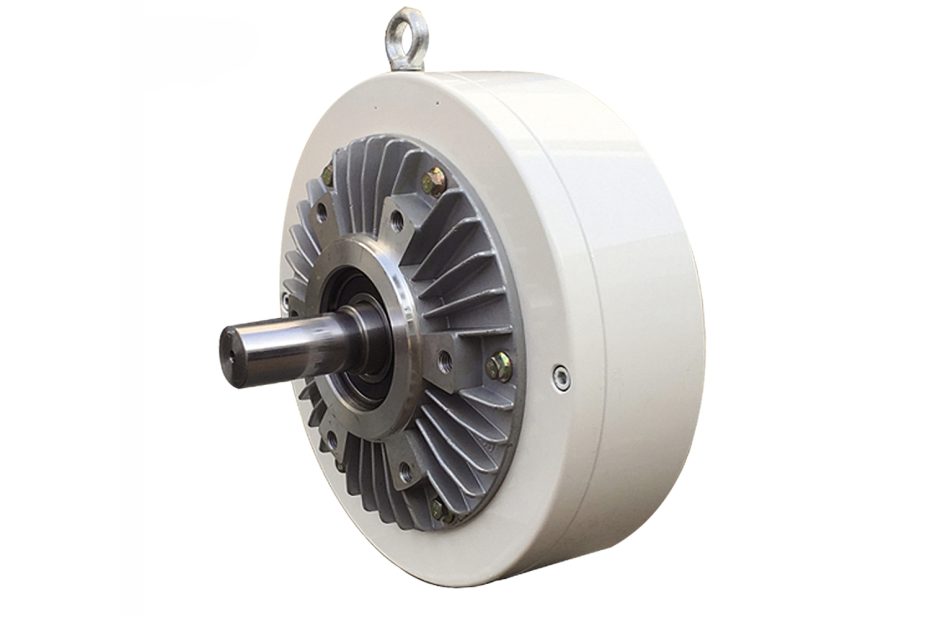In the ever-evolving landscape of industrial machinery, the quest for precision, control, and safety has led to the adoption of advanced technologies. Among these, Magnetic Particle Brakes have emerged as stalwarts, playing a pivotal role in enhancing efficiency and reliability in various industrial applications.
Magnetic Particle brake is based on the electromagnetic principle and uses magnetic powder to transmit torque. It has the advantages of excitation current and transmission torque that are basically linear. It can transmit a certain torque regardless of slip, has fast response speed, and simple structure. , is a multi-purpose automatic control component with superior performance.
Top 4 Advantages of Magnetic Particle Brakes
- Precise Control : Magnetic Particle Brakes offer unparalleled precision in controlling rotational motion. This precise control is crucial in applications where variations in speed must be carefully managed, such as in web tension control in printing or coating processes.
- Maintenance-Free Operation : Unlike traditional braking systems that may require frequent maintenance, Magnetic Particle Brakes are known for their low-maintenance operation. The absence of physical contact between the braking elements reduces wear and tear, leading to extended service life and minimal downtime.
- Smooth and Jerk-Free Operation : In industries where smooth and jerk-free operation is imperative, such as in the packaging and textile sectors, Magnetic Particle Brakes excel. Their ability to provide a consistent and controlled braking force ensures that the machinery operates seamlessly, minimizing the risk of damage to sensitive products.
- versatility : One of the key reasons Magnetic Particle Brakes find widespread use is their versatility. From automotive assembly lines to printing presses, these brakes provide a reliable and adaptable solution for controlling the motion of rotating components. The ability to fine-tune the braking force makes them indispensable in scenarios where precision and control are paramount.

Real-World Applications Of Magnetic Particle Brakes
Automotive Manufacturing
In the automotive industry, where precision and efficiency are paramount, Magnetic Particle Brakes find applications in various processes. From conveyor systems to assembly lines, these brakes contribute to the seamless and controlled movement of components, enhancing overall production efficiency.
Printing and Packaging
In the printing and packaging sector, where the quality of the final product is directly linked to the precision of the process, Magnetic Particle Brakes play a crucial role. They enable precise tension control in web-fed printing presses, ensuring high-quality output without wastage.
Comparative : Magnetic Particle Brakes vs. Alternatives
To truly appreciate the significance of Magnetic Particle Brakes, it’s essential to compare them with alternative braking systems commonly used in industrial applications. The following table provides a concise overview:
| Braking System | Advantages | Disadvantages |
|---|---|---|
| Magnetic Particle Brakes | Precise control, low maintenance, smooth operation | Initial cost may be higher than some alternatives |
| Friction Brakes | Cost-effective, simple design | Wear and tear, regular maintenance required |
| Hydraulic Brakes | High torque capacity, suitable for heavy loads | Complex hydraulic systems, potential leaks |
Conclusion
In conclusion, the adoption of Magnetic Particle Brakes in industrial applications marks a significant stride towards achieving optimal efficiency, control, and safety. Their versatility, precise control, and low-maintenance operation make them a preferred choice across diverse industries. As technology continues to advance, Magnetic Particle Brakes stand as a testament to the continuous pursuit of innovation in the industrial sector. Embracing these brakes not only ensures enhanced operational performance but also underscores a commitment to safety and reliability in the dynamic realm of industrial machinery.
